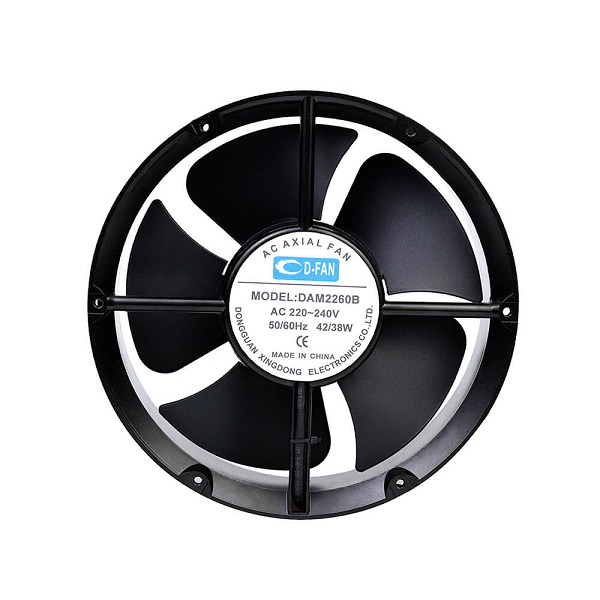With the advancement of technology, the technology and performance of cooling fans are also constantly developing and improving. At present, the specifications and dimensions of heat dissipation fans range from a few millimeters to several hundred millimeters, and there are various voltage options, such as 5V, 12V, 24V, etc. In addition, there are also various shapes of heat dissipation fans, such as square, circular, olive shaped, etc.
In modern home life, technological progress has not only changed our way of life, but also improved our quality of life. The emergence of smart toilets is undoubtedly a major innovation in the bathroom field. They are equipped with heating seats, warm air drying, automatic flushing and other functions, making users feel extremely comfortable during use while effectively reducing the risk of infection caused by unclean bathroom facilities.
In the fast-paced modern life, the emergence of dishwashers has brought about earth shattering changes in our home life. Washing dishes is a tedious and time-consuming task that requires us to personally clean every dish, dry it, and store it in the sun.
The emergence of drones has provided us with new ways and perspectives to understand things. In the past decade, their applications have become increasingly popular. The express delivery industry, film and television shooting, monitoring and inspection, transportation, agriculture, forestry, police security, surveying and mapping, and other fields have shown a significant increase in demand for drones.
Date: 2024.04.09
View: 774
In the realm of ventilation and cooling systems, efficiency is paramount. As industries and households alike seek ways to optimize energy consumption while maintaining optimal airflow, the spotlight is increasingly turning towards EC (Electronically Commutated) axial fans. These innovative fans offer a myriad of benefits, chief among them being their remarkable energy efficiency. In this comprehensive exploration, we delve into the intricacies of EC axial fans, uncovering how they outshine traditional alternatives and why they're becoming the go-to choice for various applications.
Before we delve into the energy efficiency benefits, let's briefly dissect what sets EC axial fans apart. Unlike traditional AC (Alternating Current) fans, which rely on induction motors, EC fans feature brushless DC motors powered by an external DC power supply. This design enables precise control over fan speed and facilitates seamless integration with advanced control systems, making EC axial fans highly versatile and adaptable to diverse environments.
The heart of any fan lies in its motor, and EC axial fans boast unparalleled motor efficiency. By harnessing the power of brushless DC technology, these fans minimize energy losses associated with friction and heat, ensuring maximum utilization of electrical input. Compared to their AC counterparts, EC fans can achieve significant energy savings, translating to lower operating costs and reduced environmental impact.
One of the standout features of EC axial fans is their ability to operate at variable speeds. Traditional AC fans typically function at fixed speeds determined by the frequency of the supplied power. In contrast, EC fans offer precise speed control through modulation of the input voltage or frequency, allowing for tailored airflow according to specific requirements. Whether it's a 60x60mm axial fan for compact spaces or an 80x80mm axial fan for larger installations, EC fans can adjust their speed to optimize performance while minimizing energy consumption.
Efficient airflow management is essential for maintaining optimal ventilation and cooling conditions. EC axial fans excel in this aspect by delivering consistent airflow across a wide range of operating conditions. Their ability to adjust speed dynamically ensures that airflow matches demand, eliminating unnecessary energy wastage associated with overworking or underutilizing the fan. Whether it's maintaining ambient temperatures in data centers or optimizing air quality in HVAC systems, EC fans offer unparalleled efficiency in airflow management.

In the era of smart technology, EC axial fans stand out for their compatibility with advanced control systems. Integrated sensors and communication protocols enable seamless integration with building management systems (BMS) and IoT (Internet of Things) platforms, allowing for centralized monitoring and control of ventilation systems. This level of automation not only enhances operational efficiency but also enables proactive maintenance and energy optimization strategies, further amplifying the energy efficiency benefits of EC fans.
While energy efficiency is a defining characteristic of EC axial fans, the size also plays a crucial role in determining their effectiveness. Fans come in various sizes to suit different applications, with 60x60mm axial fans catering to compact spaces and 80x80mm axial fans offering higher airflow capacities for larger installations. Regardless of size, EC fans are designed to maximize energy efficiency without compromising performance, making them the preferred choice across a spectrum of industries.
The energy efficiency benefits of EC axial fans extend beyond theoretical discussions, finding practical applications in diverse sectors:
Commercial Buildings: EC fans are increasingly employed in HVAC systems to regulate indoor air quality and temperature while minimizing energy consumption.
Data Centers: With the rising demand for data storage and processing, EC fans play a crucial role in maintaining optimal operating conditions while reducing cooling costs.
Industrial Facilities: From manufacturing plants to warehouses, EC fans offer efficient ventilation solutions that enhance worker comfort and productivity while lowering utility bills.
In a world where energy efficiency is paramount, EC axial fans emerge as champions of sustainable ventilation and cooling. With their superior motor efficiency, variable speed control, efficient airflow management, and compatibility with intelligent control systems, EC fans set a new standard for energy-efficient fan technology. Whether it's a compact 60x60mm axial fan or a robust 80x80mm axial fan, the benefits of EC technology extend across all sizes and applications. As industries strive towards greener practices and cost-effective solutions, EC axial fans stand ready to meet the challenges of tomorrow, delivering optimal performance with minimal environmental impact.